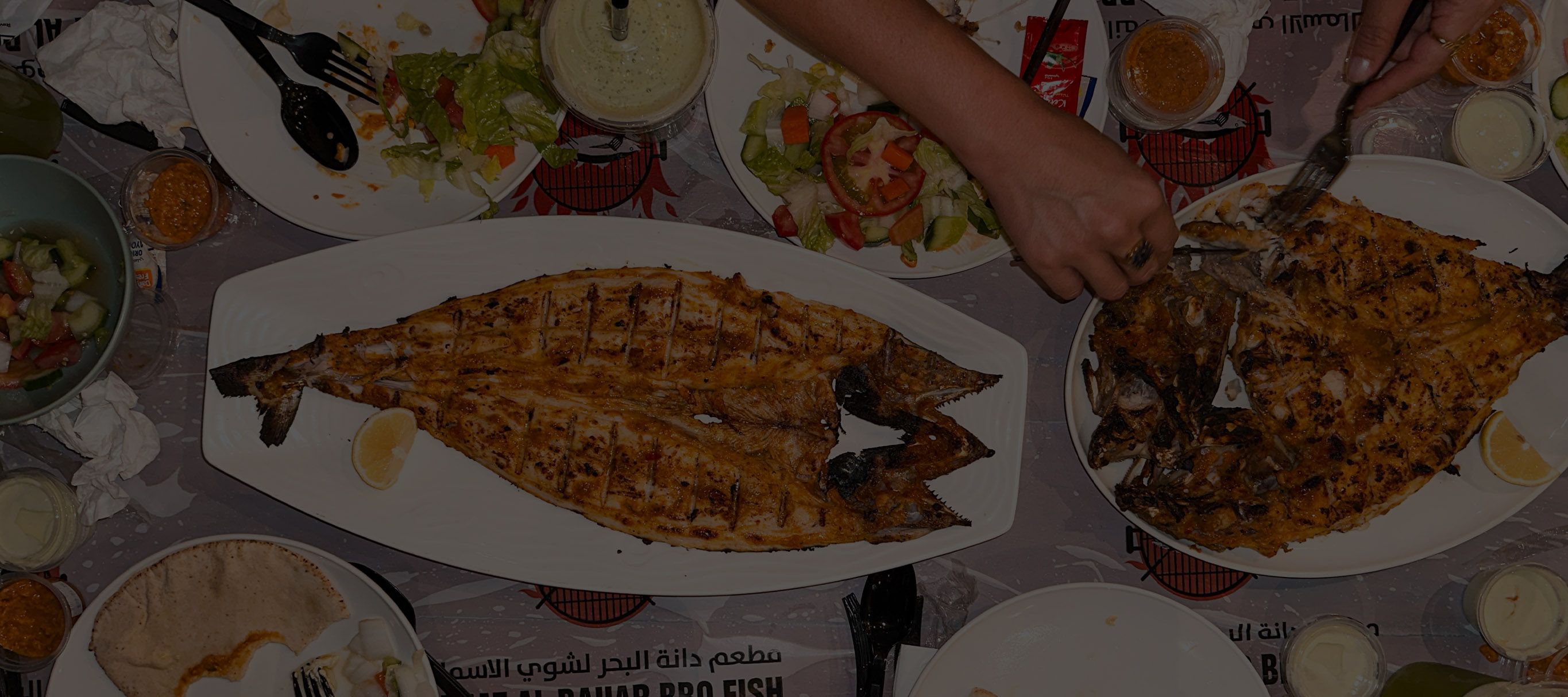

Everywhere I Ate in Doha while filming MasterChef
Words & images by Sofia Levin
Last updated 18.07.2025
With limited time to eat in Doha while filming MasterChef Australia, I made sure no meal was wasted. From street food to restaurants, here's everywhere we ate, as well as what to do and see between meals. For a deep dive, you can read about the historical context of Qatari food here, as well as a list of traditional dishes I recommend seeking out. It wasn’t until I had eaten my way through Doha that I really started to understand the city’s identity.
Turkey Central Restaurant
This humungous, bustling establishment is hardly a secret. It opens from early lunchtime until 1am and is a fast-paced, multi-storey fluorescent dining room heaving with local families, workers and those who appreciate good value and big flavours. They’re known for grilled meats and skewers blanketed with flatbread, but my pick is the tepsi kebabı, or “tray kebab”, essentially a succulent 450-gram spiced burger patty of mince cooked in a clay pot and swimming in its own fat. Don’t skip the dips, served with bread baked on-the-spot (you can’t miss the oven on your way upstairs).
Al Mirqab Al Jadeed Street, Doha, Qatar, facebook.com/turkeycentral
MasterChef moment: this was one of the rare occasions I got to socialise with some of the contestants, hijacking their dinner plans after a 4WD and ATV tour through the desert, so we could order more dishes between us.

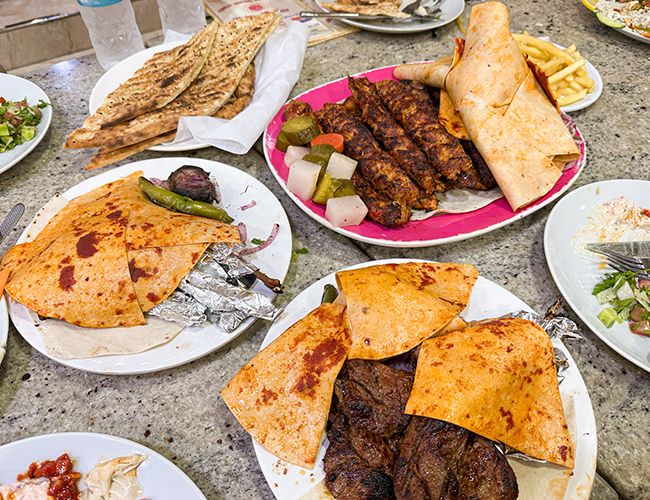
Bandar Aden Restaurant
You have to be fast if you want a table at this no-frills Yemeni eatery on the edge of Souq Waqif; it’s a favourite spot among families and groups for bold, traditional dishes. There are tables inside and floor seating, but the best spots are outside soaking up the atmospheric souq. The signature dishes here are haneeth (spice-rubbed, slow-roasted goat or lamb served on rice) and mandi, which is similar but cooked in a tannour (tandoor). Tear off pieces of enormous malawach flatbread to scoop up lamb and chicken fahsa (sizzling clay pots of meat braised with fenugreek). Top tip: linger around a table that appears to be finishing and then be ready to jump on it.
Souq Waqif, Abdullah Bin Jassim Street, Doha, Qatar, bandaraden.com
MasterChef moment: the waiter telling us that the sahawiq (zhoug, aka Yemeni green hot sauce) was too spicy for us, which of course resulted in us doubling down. It definitely burned, but in the best possible way.
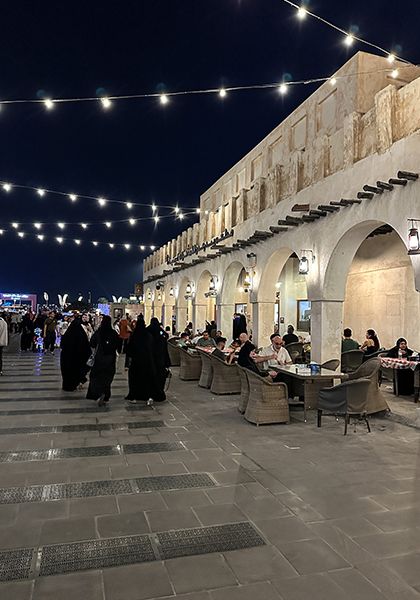
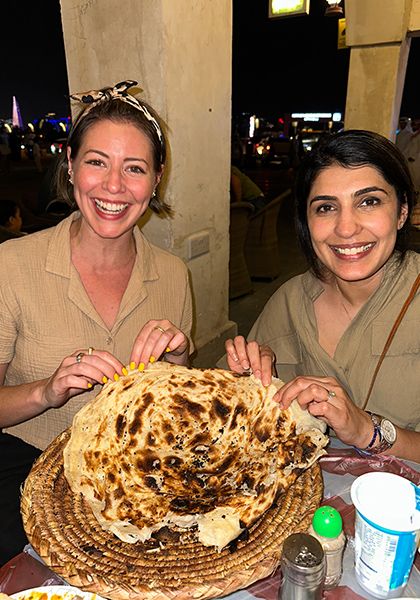
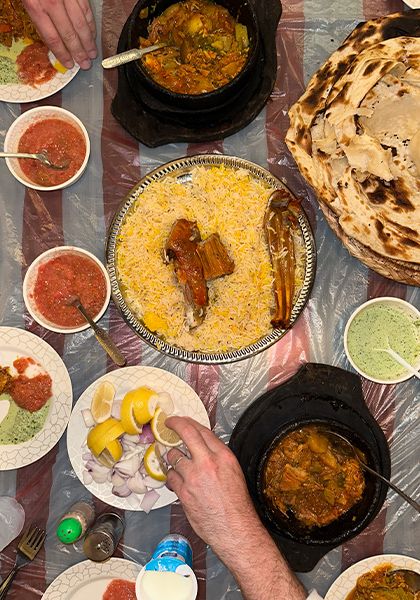
Danat Al Bahar BBQ Fish
There are a few branches of Danat Al Bahar, but it’s difficult to beat the open-air terrace at the Souq Waqif outpost. Book a table online (they’ll call you fairly last minute to confirm) and then take your pick from the display of fresh seafood. Hamour is local grouper, or you might try safi, which has sweet, subtle meat and is particularly nice fried. Note that if you see kingfish on the menu in Qatar, it is actually Spanish mackerel. Order barbecued prawns if you can, and beyond that, it’s just rice and salad. You’ll smell the smoke wafting over the balcony and into the square before your fish materialises at the table, butterflied with charcoal-blistered flesh.
Souq Waqif, Al Ahmed Street, Doha, Qatar, danatalbahar.com
MasterChef moment: not being able to fit all our food on the table, we had to edge forward on our bench and keep the bowls of rice behind us on our seats!
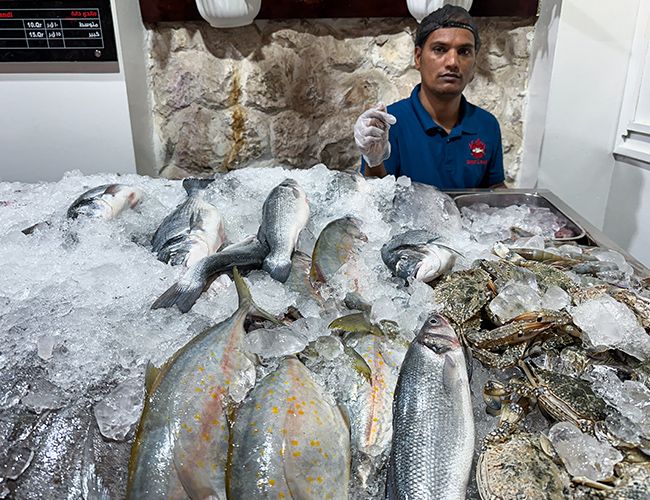
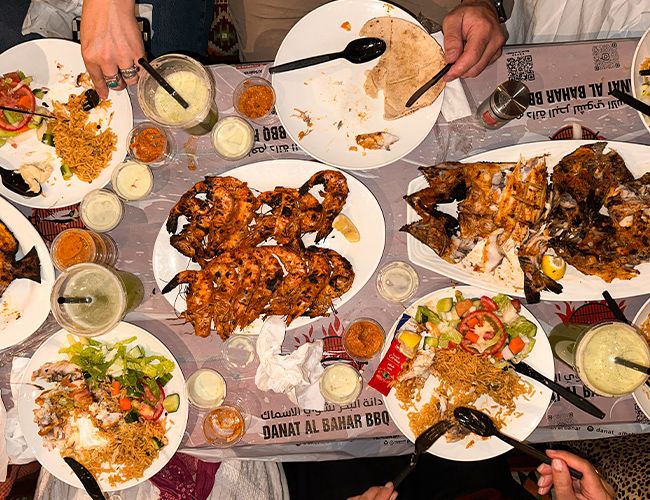
Kabab Al Tayab
Lodged in the thick of the action of Souq Waqif, Kabab Al Tayab has been serving up grilled meats since 1937. Shoppers squeeze between green wooden seating softened by Arabic cushions and tiny tables for two. It’s all about charred meats here, from mutton through to chicken livers. There are also plates like chelo kebab; skewered ground meat served with fluffy saffron-spiked rice. Flat bread with blackened bubbles on its surface is baked to order, while hummus and yoghurt come in plastic tubs.
In the guts of Souq Waqif, Doha, Qatar, instagram.com/kabab_thayyib
MasterChef moment: waving apologetically, mouths full, to contestants as they passed by filming market b-roll footage.
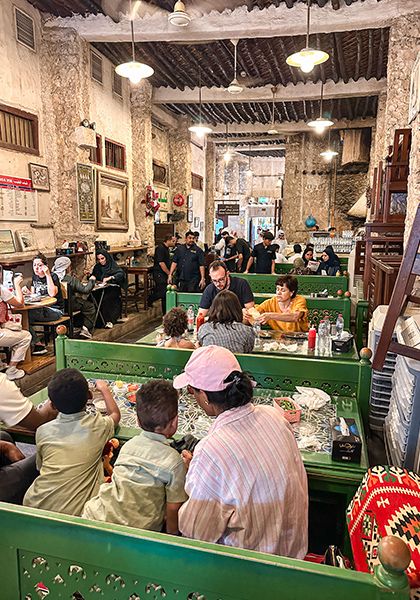
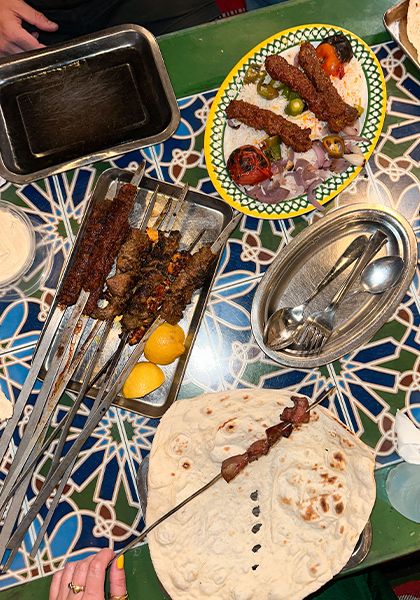
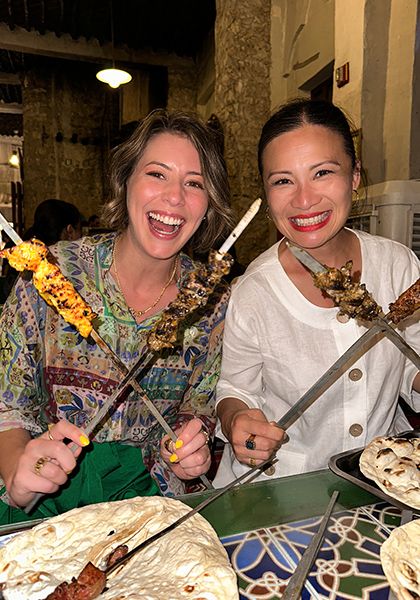
Shay Al Shomous
Owned by Shams Al Qassabi – the first Qatari woman to open a shop in Souq Waqif – this home-style restaurant is filled with locals and framed photos of notable guests. This is the spot to try a typical Qatari breakfast, indeed the menu boasts: “AlShomous Specialty Dish: one that no one else makes as good as we do”. There are pages dedicated to regag, which are paper-thin flatbreads likened to crepes that come filled or fashioned into a cone; you can try balaleet (sweetened vermicelli noodles topped with egg); and boiled fava beans. Order eggs mixed with tomato and drizzled with oddly addictive thinned cream cheese (simply “cheese” on the menu), and sip traditional coffee or milky karak tea (both spiced with cardamom). Ask staff to point you in the direction of the attached store selling jars of spice mix, teas, and pickles.
Al Bidda Boutique Hotel, Souq Waqif, Doha, Qatar, alshomous.store
MasterChef moment: deciding whether or not to throw Poh under the bus and dob her in for a photo on the wall with the owner (I decided against it).
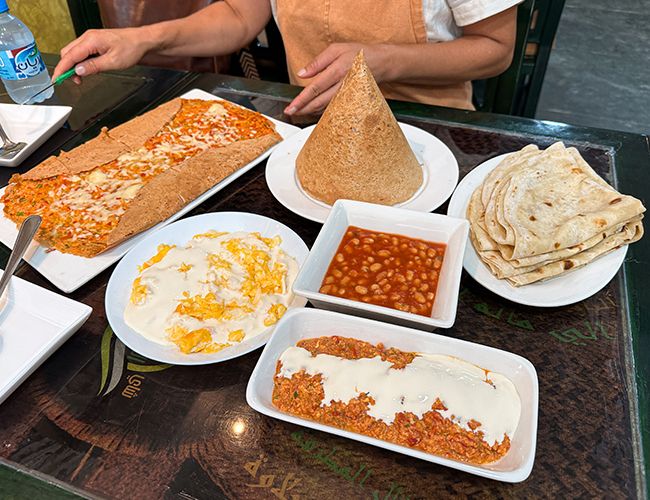
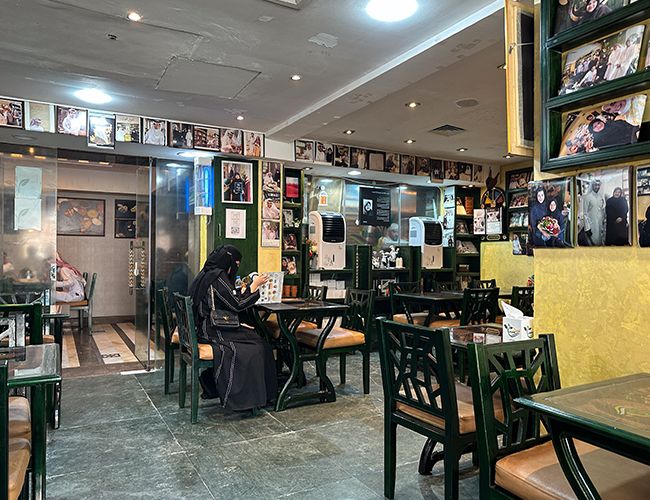
Bayt Sharq
Tucked away in a restored 100-year-old home of a Qatari diplomat, this restaurant is set within a lush garden. There's also a small museum in the middle of this tranquil spot, which is conveniently located near the National Museum and frequented by the well-to-do. Visit in the morning for a breakfast feast of various breads, condiments, dips, eggs and traditional dishes with tea. Order Qatari classics a la carte, such as machboos dajaj (fragrant chicken and rice) and harees (savoury porridge-like stew made from ground wheat, meat and spices); or simply relax with spiced coffee and traditional dessert. Be sure to order a strawberry juice, if available.
Al Corniche, Doha, Qatar, instagram.com/baytsharq.qa
MasterChef moment: Poh and I being treated to a private tour of the grounds with a staff member who was just a liiittle too chummy and complimentary.
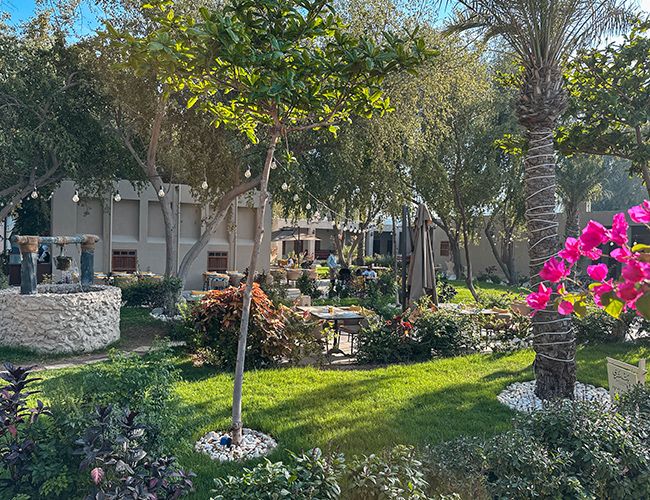
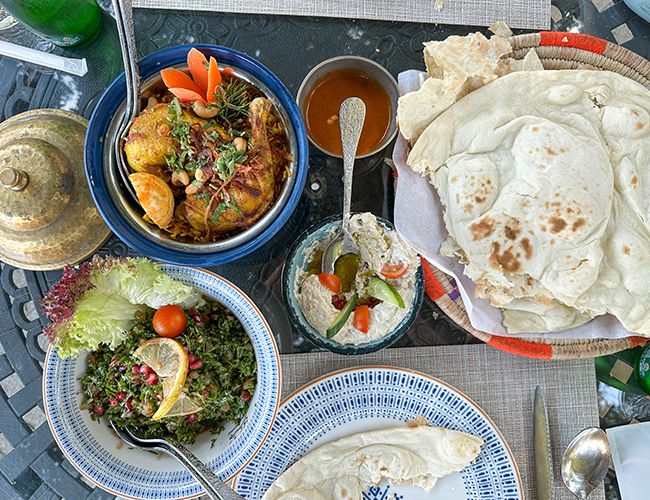
Palestine Cafeteria
Set on a main road, this achingly cheap cafeteria is geared for takeaway with a few tables for workers and taxi drivers taking short breaks. Filled pitas range from QAR3 to QAR6 (that’s $1.25 to $2.50 AUD) and are filled with falafel, egg, ful (fava beans), hummus, fried vegetables, shakshuka, chicken liver and/or meat. Dine in and they’ll throw some pickled vegetables your way, though they’re pretty acidic.
7GMQ+XWQ, Qassim Bin Mohammed Street, Doha, Qatar, no website
MasterChef moment: this was the very last meal I squeezed in before we left, making a pitstop between the National Museum and checking out of our hotel to fly home. Neither Poh or I were hungry. Both of us ate.
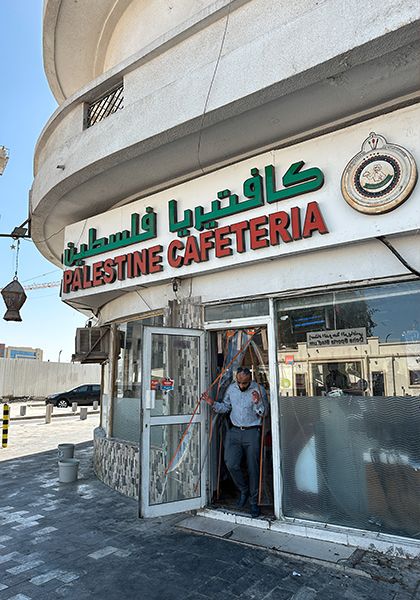
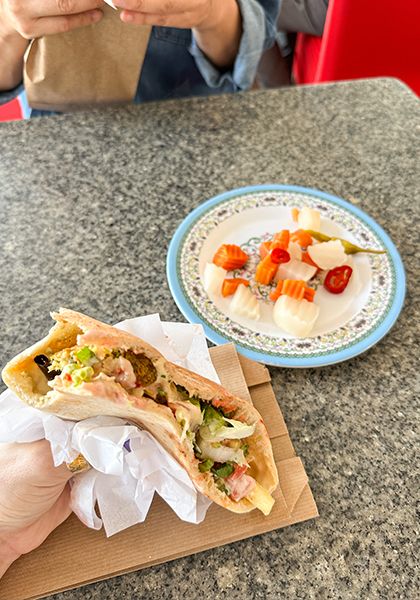
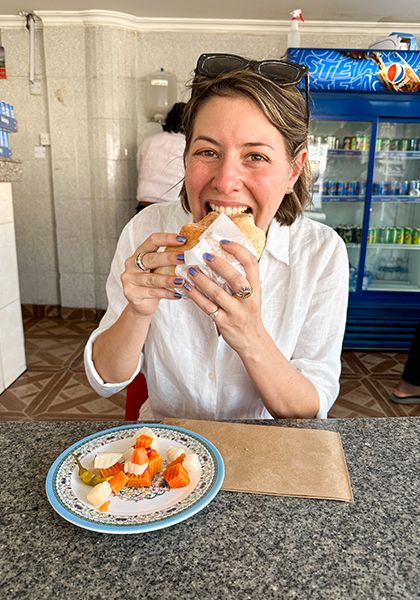
Parisa
It feels important to include Parisa because it comes up repeatedly as the place to eat inside Souq Waqif. If shimmering mosaics and getting “that” Instagram shot is important to you then, by all means, dine here. As for the Persian food – it’s fine. When we dined, service was slow and there was an unusual amount of confusion considering it was a pre-ordered set menu. That said, I can vouch for the kashk bademjan (chunky fried eggplant dip with dried yoghurt), as well as an adequate mixed kebab plate. Personally, I’d rather eat somewhere less flashy.
7GQM+4FP Souq Waqif, Al Ahmed Street, Doha, Qatar, parisarestaurants.com
MasterChef moment: Poh and I spending way too long taking photos in the ornate private dining room.
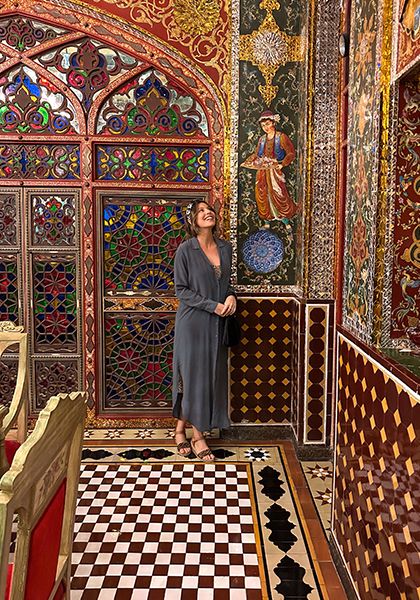
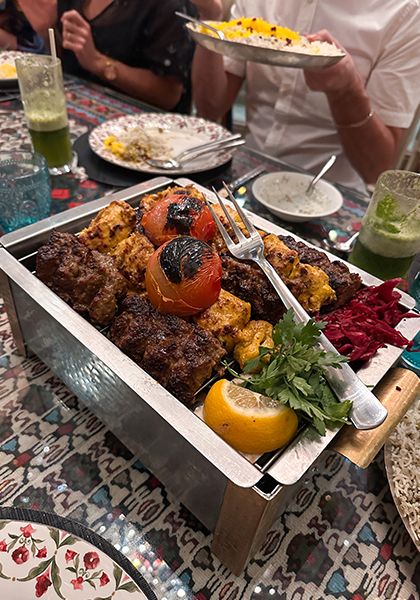
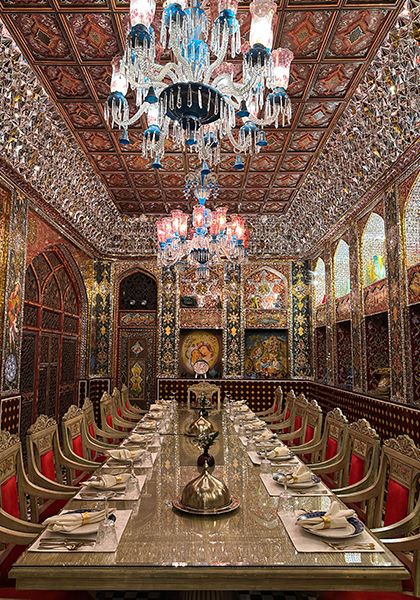
Souq Waqif
The first thing we did when we arrived in Doha was a food tour of Souq Waqif, the main market dating back to the 19th-century. You can find just about every dish you ought to try in the city in this one market, which reopened with gusto in 2006 after a fire destroyed most of it in 2003. The following is what we ate, but just a speck of what’s on offer: regag from women cooking in the square; aseeda, madrouba and balaleet from Al Mallas Golden Popular Foods; toffee-like Qatari halwa from Qatari Sweets; and machboos, madrouba and sweet loquimat with traditional coffee in the majlis room at Sufrat Omi Lolwa.
Souq Waqif, Doha, Qatar, souqwaqif.qa
MasterChef moment: the tour finished so near to Bandar Aden Restaurant that I couldn't resist popping in for a second dinner. I was joined by some of the contestants, who are, of course, very good eaters.
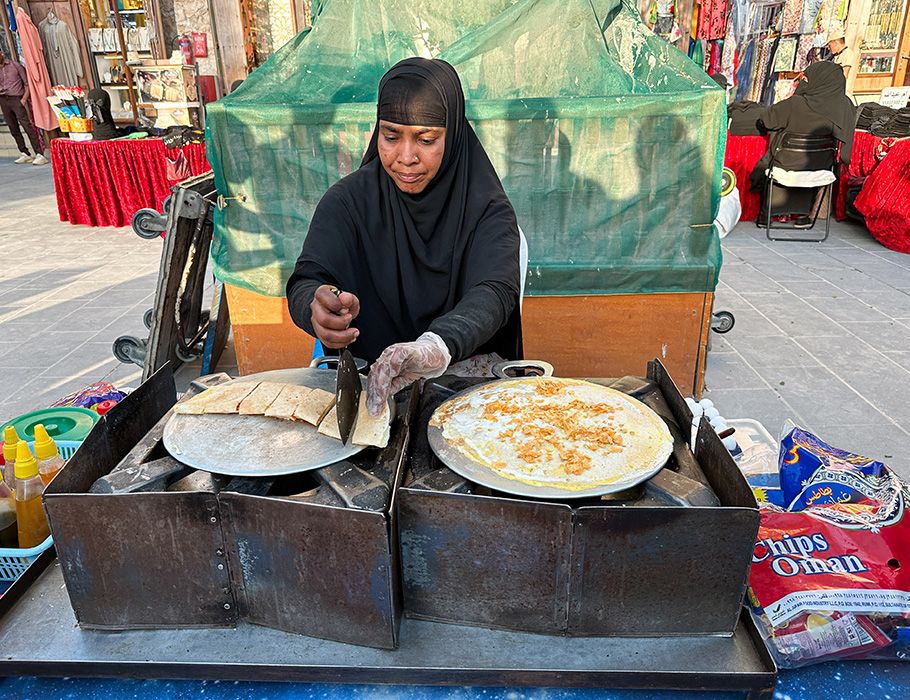
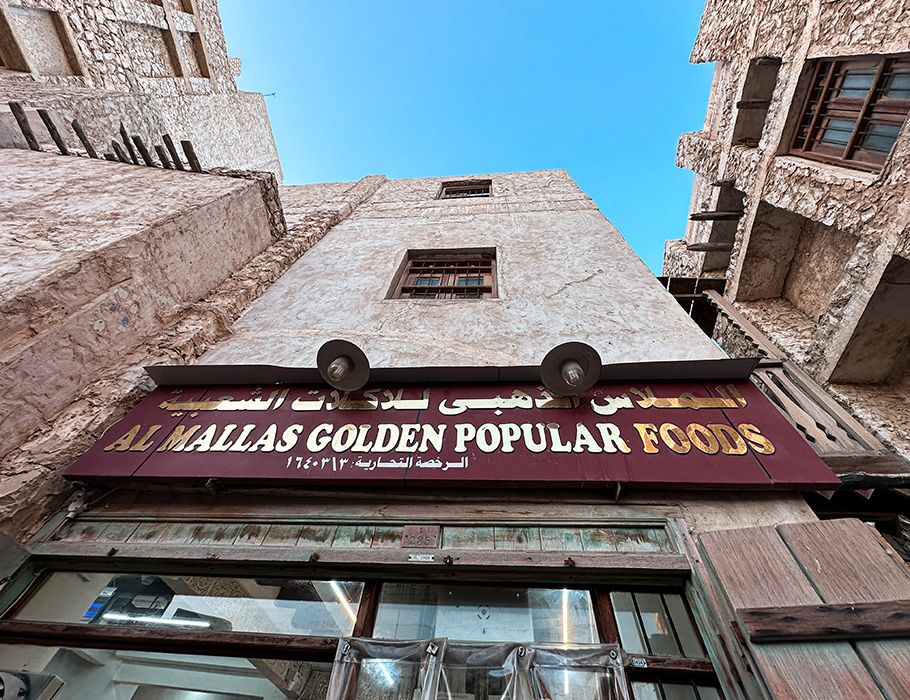
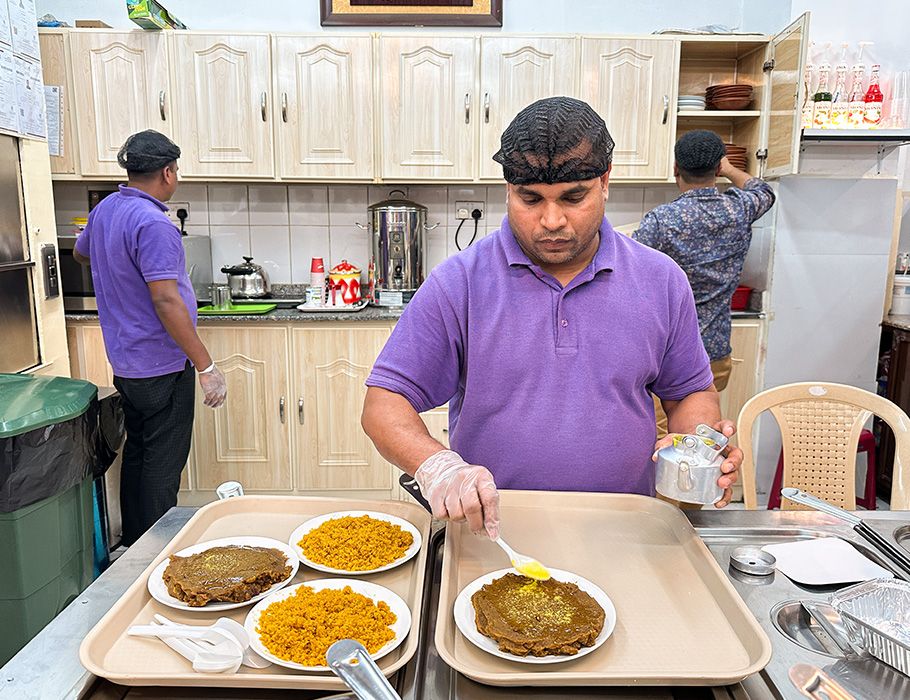
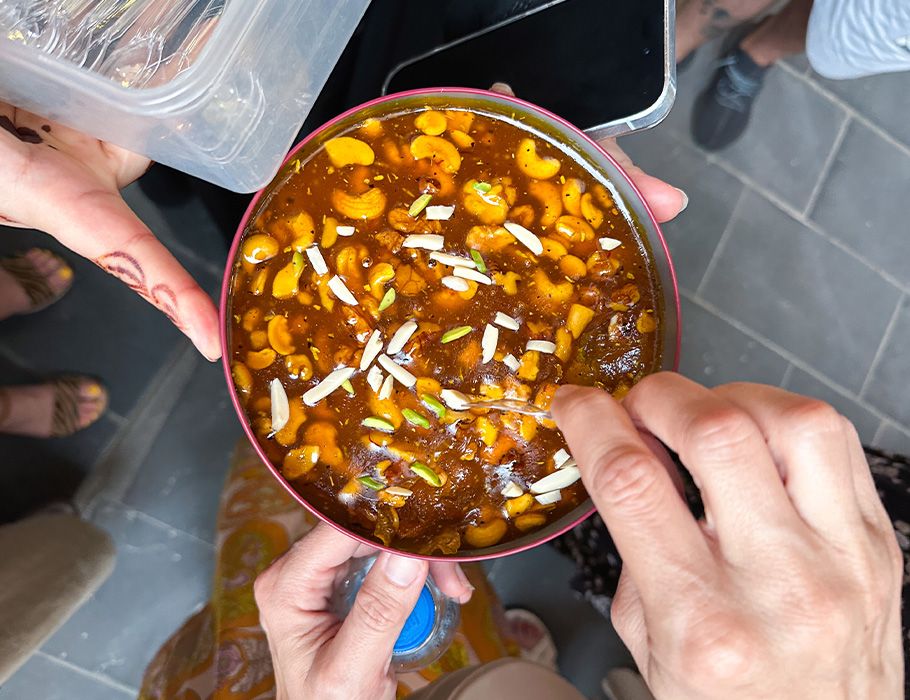
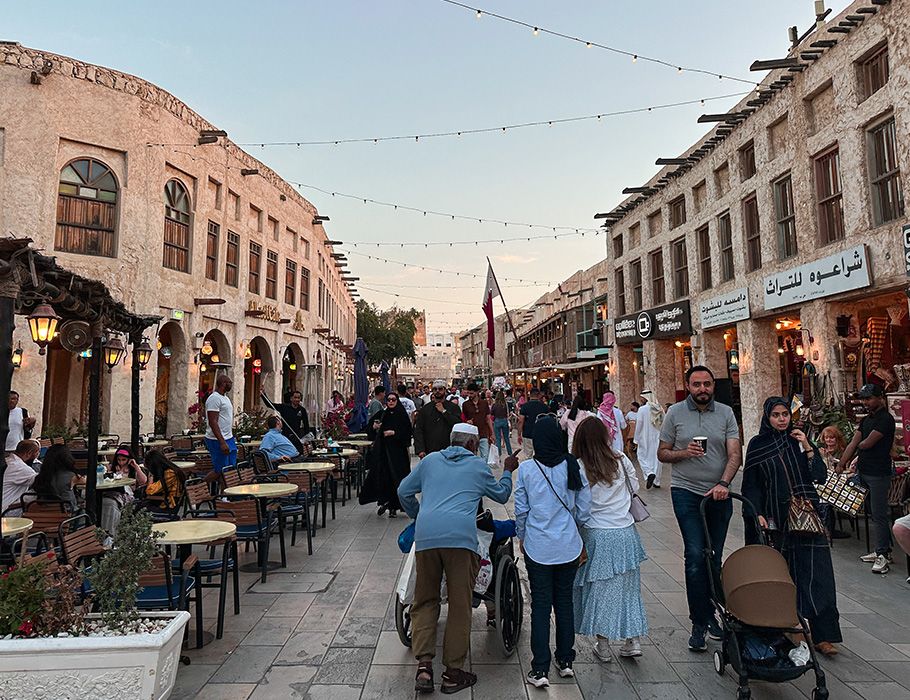
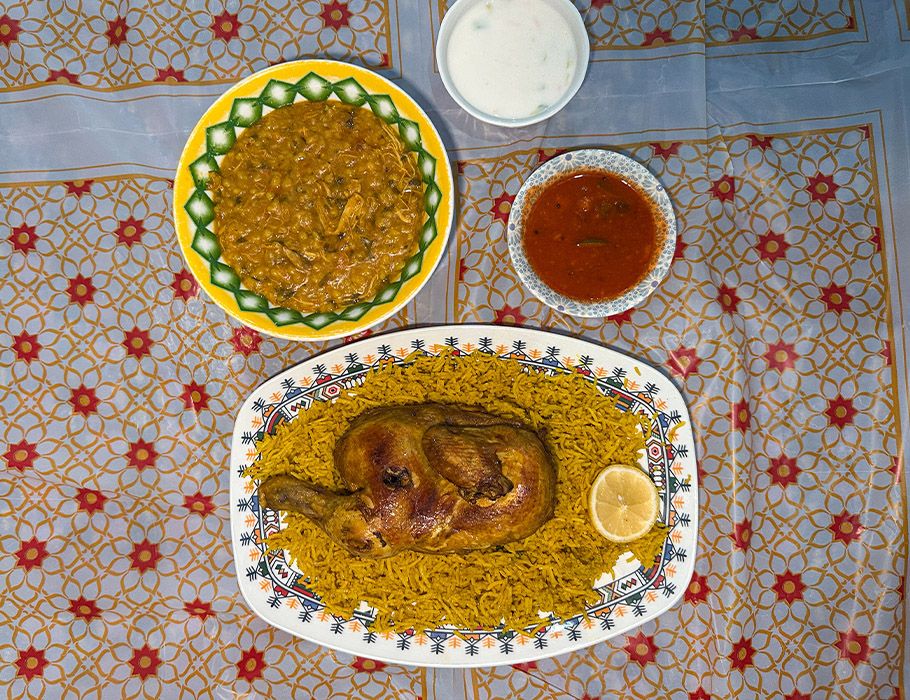
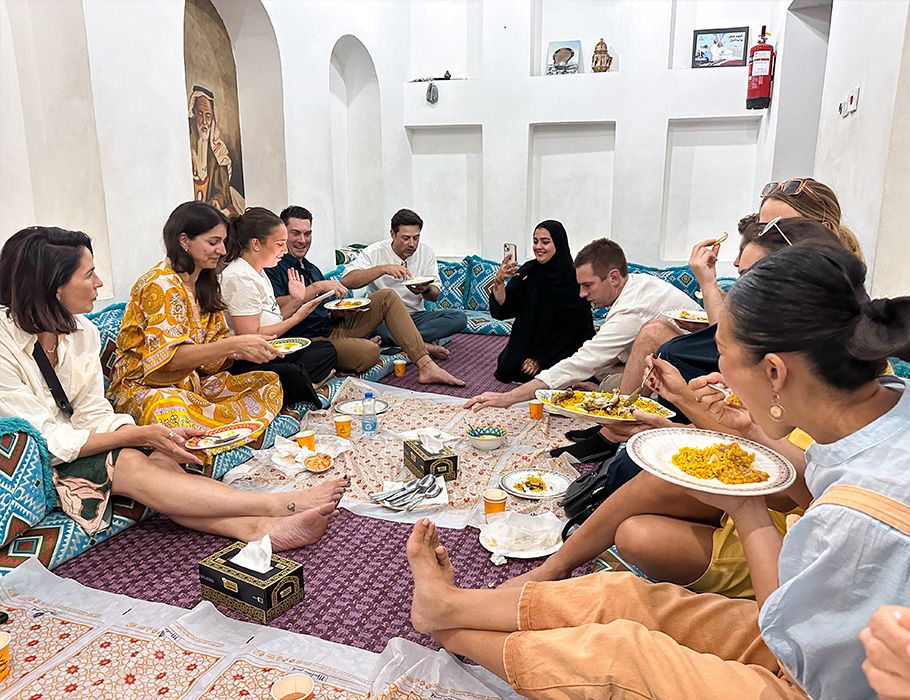
Six Things To Do in Doha (that don't involve Eating)
While my focus is always on dining, you’re going to need some activities so you can digest between meals. From ancient traditions through to futuristic architecture, here are six non-food experiences for a different taste of Qatar’s capital.
1. Marvel at Masterpieces at the Museum of Islamic Art
Designed by I.M. Pei, the Museum of Islamic Art is a striking architectural icon on its own island off the Corniche. Outside, two half circles are designed to resemble the eyes of a woman peering through a niqab or a burqa. Inside is one of the world’s most impressive collections of Islamic art; from textiles, ceramics and jewellery, through to weapons and manuscripts, all spanning more than 1,400 years. The museum’s symmetrical interior and waterside views make it a calm retreat from the heat, as well as a place to immerse yourself in Islamic culture. The top floor is home to IDAM by Alain Ducasse, the Michelin-starred restaurant in which we filmed our degustation challenge.
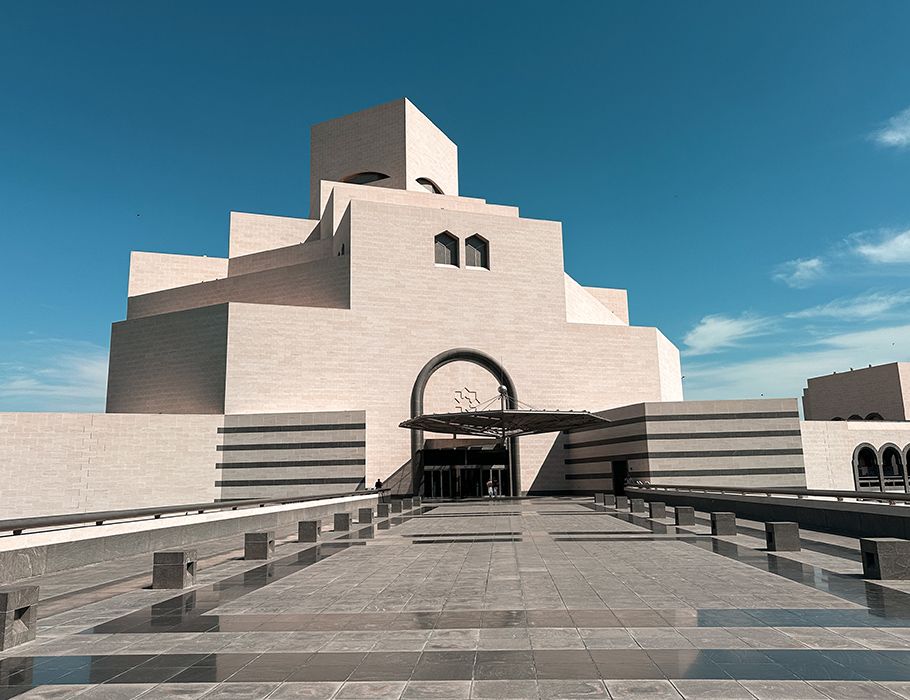
2. Take a History Lesson at the National Museum of Qatar
Shaped like the sandy, overlapping discs of a desert rose and designed by Jean Nouvel, the National Museum of Qatar tells the country’s story from its geological beginnings to its more recent and rapid modernisation. Interactive exhibits, oral histories, and immersive galleries walk you through Bedouin culture, pearl diving, oil discovery, and contemporary identity. Don’t miss The Pearl Carpet of Baroda, made with 1.5 million precious pearls.
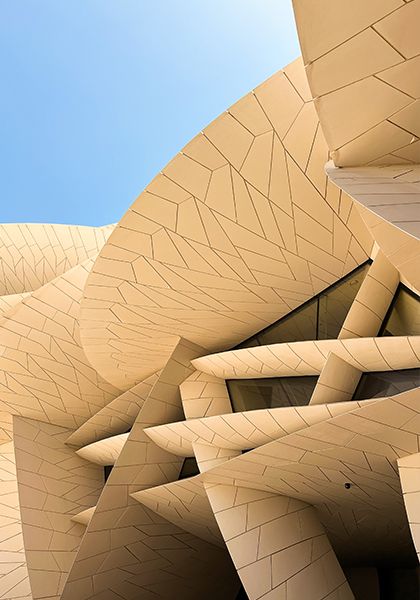
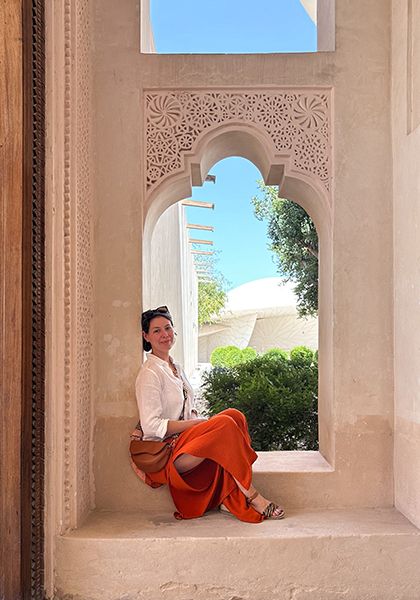
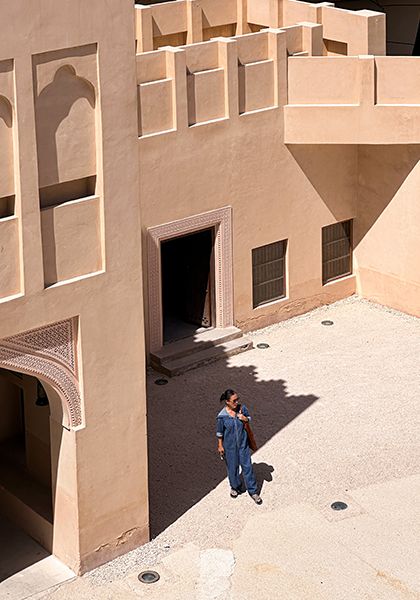
3. Catch the Sun Set in the Mina District
On weekends, the pastel-hued facades of the Mina District come to life with local families and groups of friends. Located near the Port, this redeveloped area is lined with restaurants and boutiques, but it’s best for the Wes Anderson-esque scenery and people watching. Arrive before the fish market closes and take in the tiled floor and blue glass ceiling, as well as the catch of the day. Stroll past dhows (traditional sail boats) bobbing in the harbour and time your visit with golden hour.
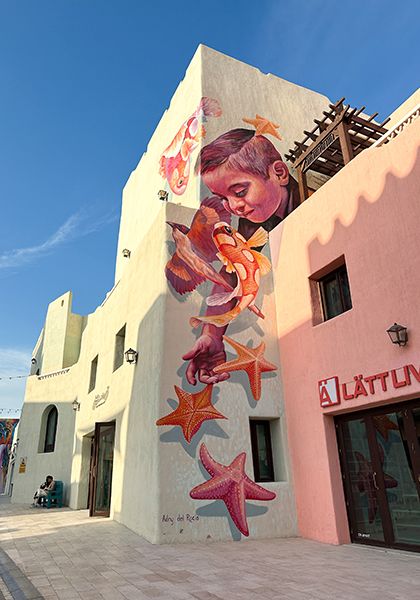
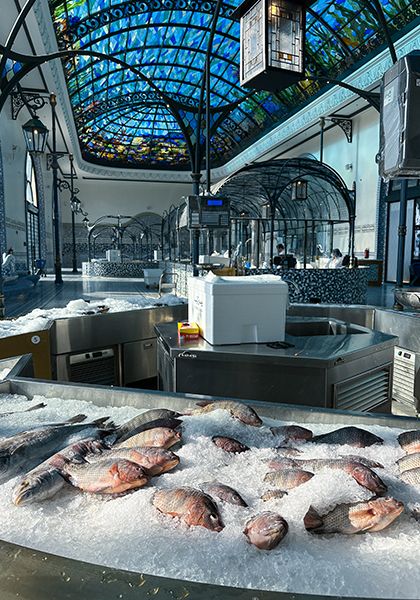
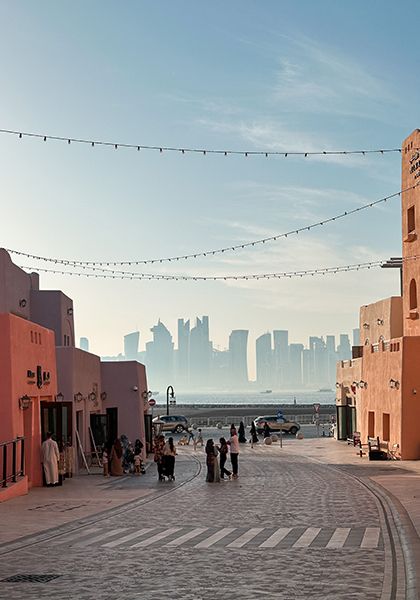
4. Explore Katara Cultural Village
A hub of arts, performance and tradition, Katara Cultural Village is best explored on foot. Visit the striking Golden Masjid, peek inside Katara Mosque, snap a photo beside the pigeon towers, walk through the Greek-inspired amphitheatre (or better yet, catch a performance there), visit the galleries and see what’s on via the website.
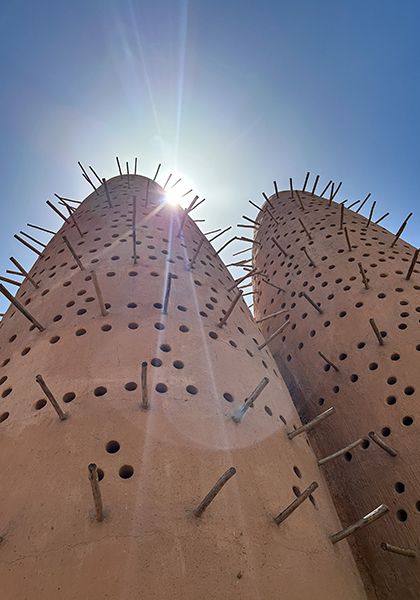
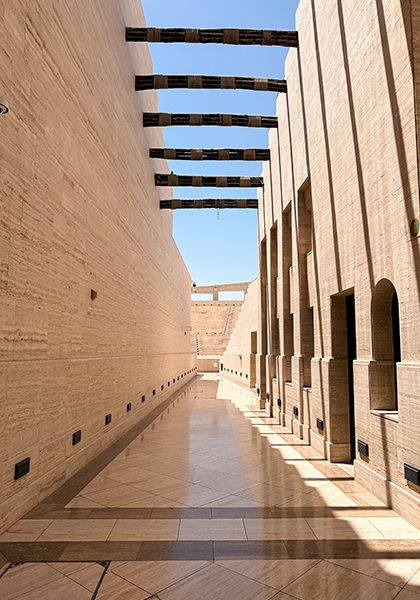
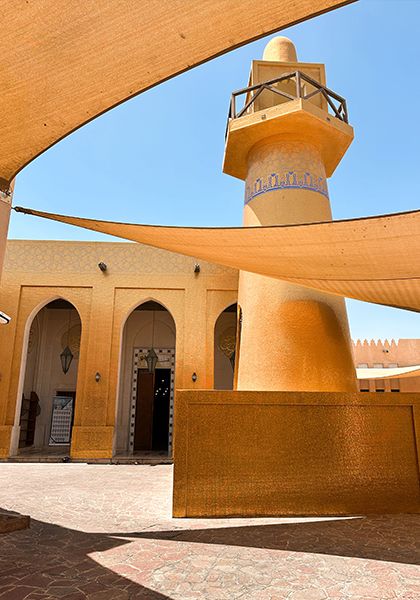
5. Get Lost in Souq Waqif (and Visit the Falcon Hospital)
Souq Waqif is Doha’s most visited spot for a reason. Beyond its street food and restaurants, this labyrinthine of a market is where people shop for souvenirs, gold, oud oil and spices. You might want to avoid the animal and bird section, but the Falcon Hospital is one of the most interesting sights; a specialised vet where prized birds of prey are more than just national symbols – they’re adored.
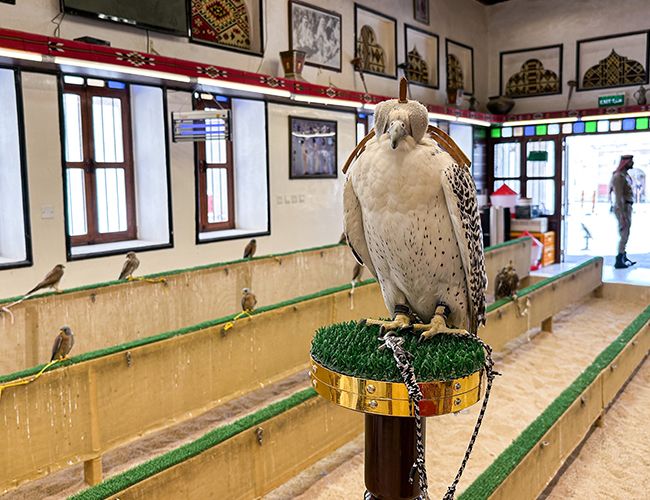
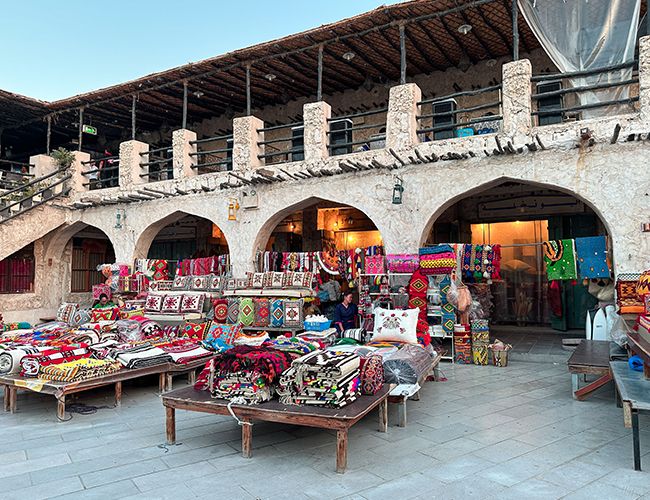
6. Go on a Desert Safari Adventure
Just outside Doha city lies a landscape of rolling sand dunes, best explored on a tour that includes dune bashing in a 4WD, driving ATVs, sandboarding, visiting a Bedouin camp and even a camel ride. Depending on your preference, you might time it to catch the sunset or start late to see a blanket of stars twinkling over the desert. You can compare tours online.
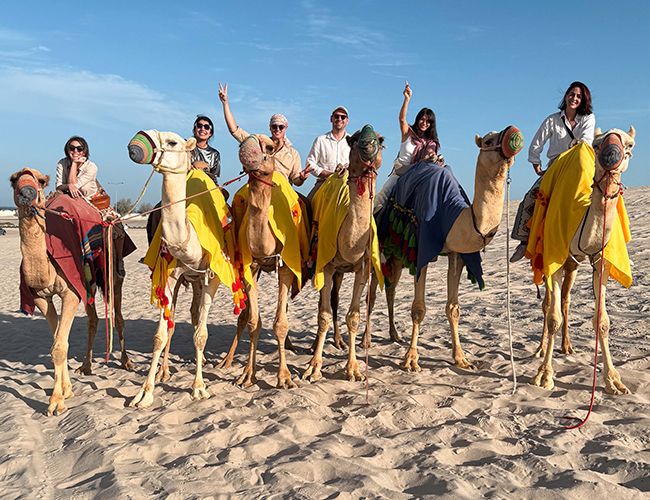
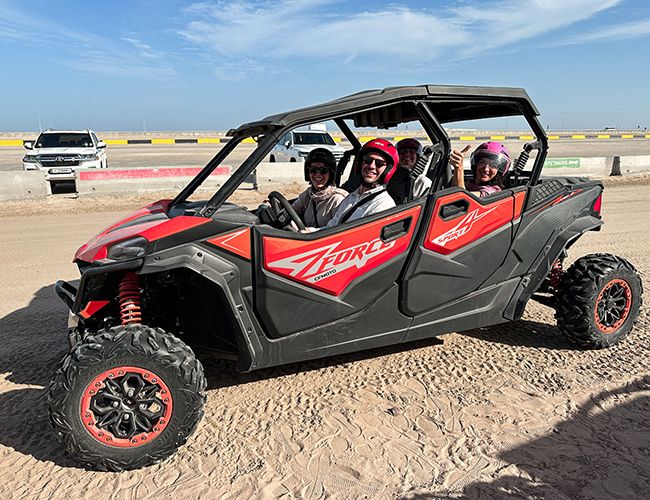
Join the Eat Curiously Movement
Subscribe to the food newsletter that goes deeper.
